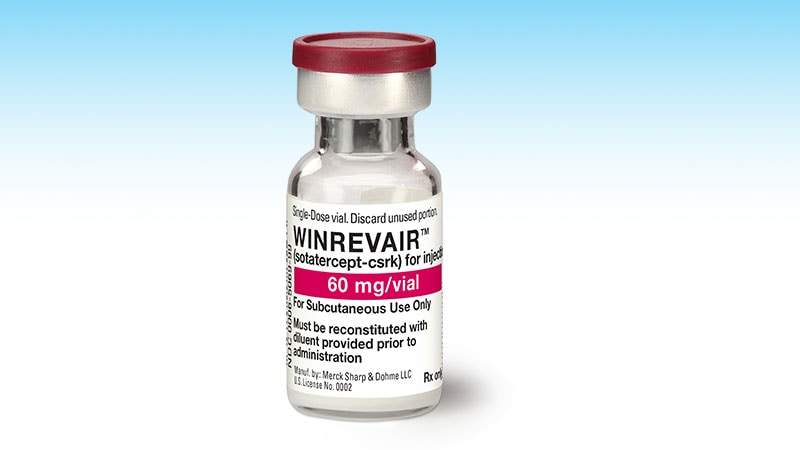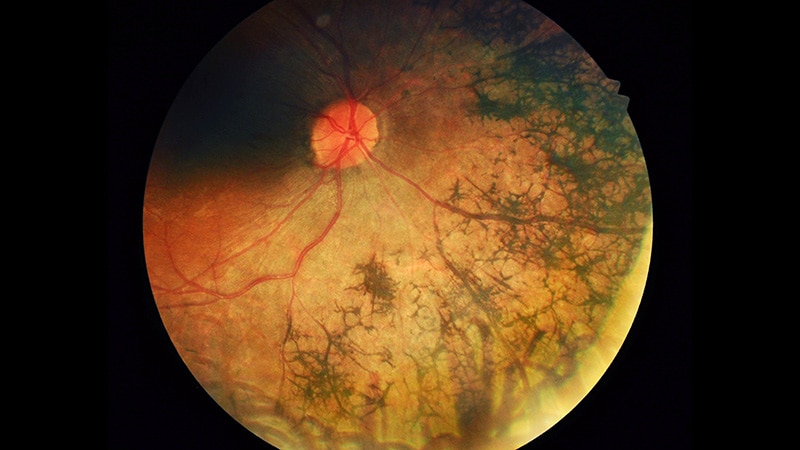VIENNA — People with spondyloarthritis (SpA) who have low or stable disease activity can effectively and safely be managed using a model of patient-initiated care with or without remote monitoring, suggested the results of two separate trials presented at the European Alliance of Associations for Rheumatology (EULAR) 2024 Annual Meeting.
In the 18-month, single-center ReMonit study that included 243 people with axial SpA (axSpA), patient-initiated care was found to be noninferior for keeping them in a low-disease activity state compared with both usual hospital follow-up and remote digital monitoring.
Meanwhile, in the 12-month, multicenter TeleSpA study, which included 200 patients with any type of SpA, the number of hospital visits needed by people who were randomly assigned to receive patient-initiated care together with asynchronous telemonitoring was significantly lower than for the usual care group, with no detriment to the participants' overall health outcomes or safety. Moreover, the strategy was deemed cost-effective from a healthcare provision perspective.
Time to Rationalize Healthcare Resources?
 Inger Jorid Berg, MD, PhD
Inger Jorid Berg, MD, PhDPeople with chronic rheumatic diseases such as axSpA require long-term follow-up in specialist healthcare centers, Inger Jorid Berg, MD, PhD, of Diakonhjemmet Hospital in Oslo, Norway, said when she presented the findings of the ReMonit study as a late-breaking abstract on June 15.
"Traditionally, this has been offered as prescheduled face-to-face consultations at an outpatient clinic, but remote monitoring and patient-initiated care may allow for more targeted and efficient uses of healthcare resources," Berg said.
"The end goal of what you're trying to do is increase the efficiency of outpatient care and provide more patient-tailored care," Kasper Hermans, MD, told Medscape Medical News. He presented the results of the TeleSpA study.
Hermans, who is a rheumatology fellow and PhD candidate at Maastricht University in the Netherlands, observed during his presentation at EULAR 2024 that there is an increasing demand for rheumatology services but an expected shortfall in the future workforce. Thus, "sustainable alternative strategies are needed for optimizing the efficiency of care," he said.
People need to have timely access to care, Hermans stressed, but perhaps alternatives to the traditional models of care where patients are seen routinely every 6 or 12 months are needed, particularly as prior work had suggested that around one third of people who were seen by a rheumatologist perhaps did not need to be.
A strategy of patient-initiated care — which is where people are seen by a healthcare provider only if they feel that they need to and request a consultation — is therefore an attractive proposition, particularly if it is backed up with remote monitoring, which is what the TeleSpA study was testing.
Two Distinct Studies
ReMonit and TeleSpA were two distinct studies. While both were noninferiority trials and involved patient-initiated care and telemonitoring of outpatients with SpA, that is where the similarities generally end.
Notably, ReMonit included a very specific population of patients — all had a diagnosis of axSpA and were being treated with a tumor necrosis factor (TNF) inhibitor and had been on a stable dose for the last 6 months. For inclusion, they also had to have inactive disease or low disease activity, as indicated by an Ankylosing Spondylitis Disease Activity Score (ASDAS) < 2.1.
ReMonit's telemonitoring strategy involved participants completing monthly questionnaires using the Dignio smartphone app. Patients first completed the Patient Global Assessment (PGA) and noted whether they had experienced a flare in their disease. If they had a flare or their PGA score was 3 or higher, then they were asked to also complete the Bath Ankylosing Spondyloarthritis Disease Activity Index (BASDAI). If the BASDAI score was 4 or more, then the patient was called by a study nurse and offered a consultation.
"Patients in all three groups were recommended to take blood samples at the general practitioner's or at the hospital every third month as a safety procedure when using TNF inhibitors," Berg said.
The primary outcome was the proportion of people who remained with low disease activity (ASDAS < 2.1) at 6, 12, and 18 months in each of the three arms of the trial, which were patient-initiated care (n = 81), monthly remote monitoring (n = 80), or usual follow-up in the hospital every 6 months (n = 82).
 Kasper Hermans, MD
Kasper Hermans, MDTeleSpA on the other hand was a "much more pragmatic trial, much closer to actual care," Hermans said. "We included axial spondyloarthritis, peripheral spondyloarthritis, or patients who had both axial and peripheral disease, including patients with psoriatic arthritis," he said, adding that their inclusion was regardless of their baseline ASDAS based on C-reactive protein (ASDAS-CRP).
This means that patients who would otherwise have been classified at baseline as having high disease activity (by ASDAS-CRP or similar disease activity measures) could be included. The main proviso was that both the patient and their rheumatologist had to define the condition as being stable with an acceptable level of symptom control and no immediate plans to change treatment within the next 3 months.
TeleSpA's remote monitoring strategy involved the use of SpA-Net, which Hermans and co-investigators have described previously as "an ongoing, disease-specific, prospective, web-based registry for monitoring SpA in daily practice." This captures a host of clinical and laboratory test information.
SpA-Net was used in both arms of the study. However, while the 100 participants in the standard care arm completed questionnaires and had tests before every in-person visit that had been prescheduled with their rheumatologist, the 100 individuals in the patient-initiated-care arm had no prescheduled in-person visits except for being seen at the start and end of the study. These patients were reminded via email to complete the necessary SpA-Net registry questionnaires at 6 months.
The primary outcome for TeleSpA was the total number of rheumatology visits, including both physical and telephone or video consultations, within a 1-year period.
ReMonit Results
Berg reported that similar percentages of patients remained in a low disease activity state at 6, 12, and 18 months, regardless of the group that they had been randomized into, and that there was little change seen within the individual groups.
For instance, at 6, 12, and 18 months, 92%, 91%, and 92% of individuals in the patient-initiated arm had an ASDAS of < 2.1. Corresponding percentages for the usual care arm were 96%, 93%, and 90% and for the remote monitoring arm were 96%, 96%, and 94%.
Both patient-initiated care and remote monitoring were noninferior to usual care, and patient-initiated care was also noninferior to remote monitoring. There were no differences between the trial arms in terms of disease activity, measured using either ASDAS or BASDAI, at 6, 12, or 18 months.
Berg stated that "patient satisfaction was high in all three follow-up strategies, and there was the lowest resource use with patient-initiated care." She concluded that "remote monitoring and patient-initiated care could be implemented in the follow-up of patients with axial spondyloarthritis and low disease activity."
TeleSpA Results
In TeleSpA, people in the patient-initiated care and telemonitoring arm were seen a mean of 1.9 times over the course of the 1-year follow-up vs 2.6 for people in the usual care arm. The reduction was due in part to the decrease in physical visits (1.4 vs 2.0) as there were the same mean number of telephone visits in each group. Overall, there was a 25.4% reduction in consultations comparing the patient-initiated care and telemonitoring arm with the usual care arm.
Importantly, the intervention was noninferior regarding all of the predefined health outcomes: ASDAS, BASDAI, pain assessed using a visual analog scale, patient global assessment, and physician global assessment.
And more than 90% of participants in both groups reported having an overall good experience with their care.
Hermans noted after his presentation that an additional study had been performed where "we actively engaged with patients in the intervention group as well as healthcare providers to ask them what their experiences were with the intervention, how we could possibly improve it, and whether or not they thought that it was a valid approach to follow-up after the end of the study. And results were very, very reassuring."
In terms of safety, eight serious adverse events were reported, but none were related to the study intervention, Hermans said.
Hermans reported that there was "negligible difference" in the 1-year quality-adjusted life years (+0.004, in favor of the intervention overall) and that while healthcare costs were lower at €243/year for the entire intervention period, societal costs were higher, at €513/year vs usual care. The latter was thought to be "due to an unexpected rise in absenteeism that we think was most likely due to a small amount of outliers," Hermans said.
Nonetheless, using at willingness-to-pay threshold of €20,000/ quality-adjusted life year, he reported that the added value of patient-initiated care with remote monitoring yielded a potential net monetary benefit of +€322 from a healthcare perspective for the entire intervention period.
"We believe that these results support the fast-paced adoption of remote care interventions," Hermans said. "In the context that I described earlier, of decreasing healthcare personnel and rising costs, we believe that this could be a valuable approach for follow-up for patients with stable axSpA."
ReMonit was sponsored by Diakonhjemmet Hospital, and TeleSpA was sponsored by Maastricht University Medical Center, with funding from the Dutch Arthritis Society. Berg and Hermans had no relevant conflicts of interest to report.
Sara Freeman is a medical journalist and writer based in London, United Kingdom. She is a regular contributor to Medscape Medical News, Medscape News UK, and other specialist healthcare media outlets.

.webp) 2 days ago
3
2 days ago
3





























 English (US)
English (US)